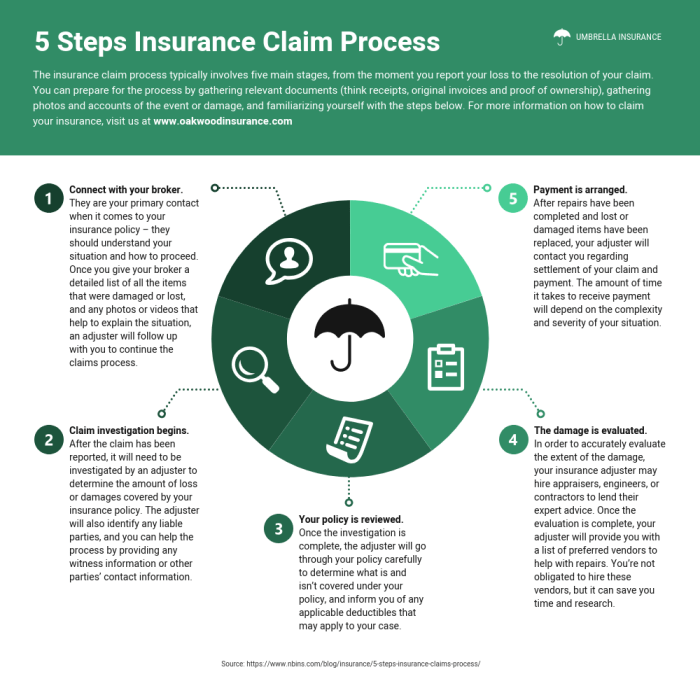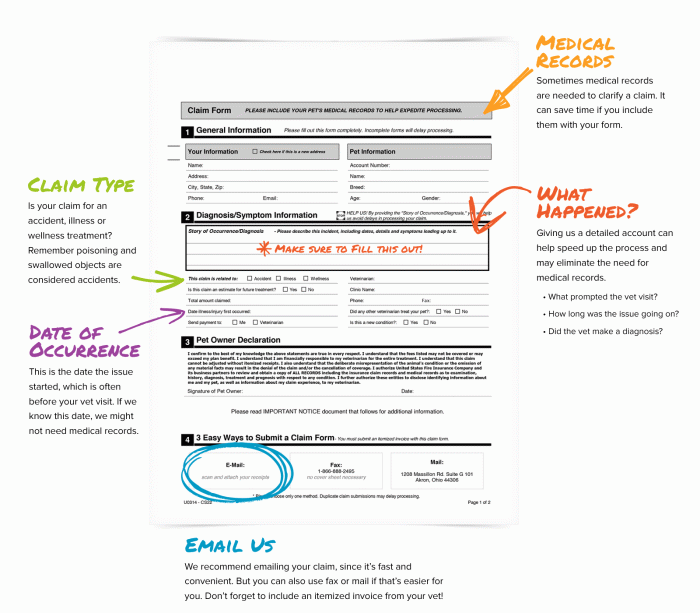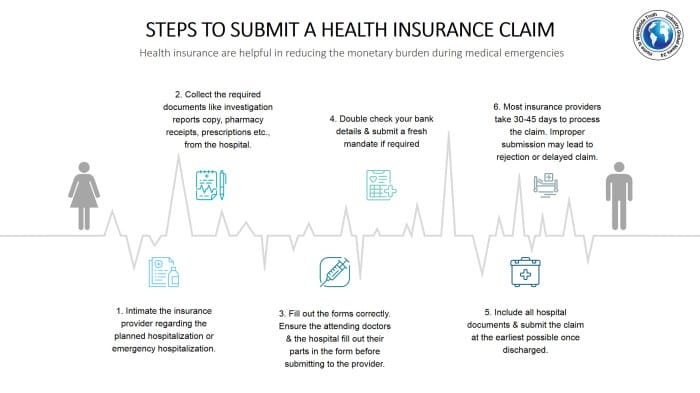In the world of insurance claims, the question of whether tips can be claimed as part of meal submissions often arises. This intricate topic involves a myriad of factors, ranging from insurance coverage guidelines to documentation requirements. Delving into the complexities of this matter, we will explore the nuances of claiming tips on meal submissions, ensuring a comprehensive understanding of the process.
From eligibility criteria and calculation methods to common challenges and legal considerations, we will navigate the intricacies of this subject, providing valuable insights and practical guidance. Whether you’re a seasoned insurance professional or an individual seeking reimbursement for meal expenses, this exploration will equip you with the knowledge necessary to navigate the insurance landscape successfully.
Insurance Coverage for Tips

Navigating the nuances of insurance coverage for tips when submitting meals can be a complex endeavor. Let’s delve into the intricacies of this topic, encompassing both general guidelines and specific restrictions associated with claiming tips as part of meal submissions.
General Rules and Regulations
In the realm of insurance coverage for tips, a set of overarching rules and regulations govern the submission process. These principles serve as the foundation for understanding the parameters within which tips can be claimed as part of meal submissions.
- Transparency and Documentation: Maintaining meticulous records of tips received is paramount. Accurate documentation, including receipts, invoices, and electronic records, substantiates the validity of tip claims.
- Tip Pooling: In instances where tips are pooled among employees, the distribution method must be clearly defined and consistently applied. This ensures equitable allocation of tips among eligible recipients.
- Reporting Requirements: Adhering to reporting requirements stipulated by the insurance provider is essential. Failure to comply with these mandates may jeopardize the validity of tip claims.
- Tax Implications: Tips are considered taxable income and must be reported accordingly. Neglecting to do so may result in legal repercussions and financial penalties.
Specific Guidelines and Restrictions
Beyond the general rules, specific guidelines and restrictions further shape the landscape of insurance coverage for tips. These parameters vary across insurance providers and jurisdictions, necessitating careful consideration of the following aspects:
- Tip Allocation: Insurance policies may impose limitations on the allocation of tips among employees. Understanding these restrictions ensures compliance with policy provisions.
- Meal Submission Thresholds: Some insurance providers establish minimum thresholds for meal submissions. Meeting these thresholds is crucial for successful claims.
- Meal Type Restrictions: Certain meal types may be excluded from insurance coverage. Familiarizing oneself with these exclusions prevents futile claims.
- Documentation Requirements: Insurance providers may specify specific documentation requirements for tip claims. Fulfilling these requirements strengthens the validity of claims.
Eligibility Criteria

To claim tips on meal submissions, certain eligibility requirements must be met. These criteria vary depending on the insurance policy, employment status, and documentation provided.
To begin with, the type of insurance policy plays a crucial role. Some policies explicitly exclude tips from coverage, while others may allow them under specific circumstances. It’s essential to carefully review the policy’s terms and conditions to determine eligibility.
Employment Status
Employment status is another key factor in determining eligibility. Generally, employees are more likely to be eligible to claim tips than independent contractors. This is because employees are typically covered under the employer’s insurance policy, which may include provisions for tip coverage.
Independent contractors, on the other hand, are typically responsible for obtaining their own insurance, which may or may not include tip coverage.
Documentation
Proper documentation is crucial for claiming tips on meal submissions. This may include receipts, credit card slips, or other forms of proof that the tips were actually received. Additionally, some insurance companies may require a written statement from the employer or supervisor confirming the employee’s eligibility to receive tips.
Documentation and Record-Keeping

Proper documentation and meticulous record-keeping are crucial to support claims for tips on meal submissions to insurance companies. These records serve as concrete evidence of the tips received, ensuring accurate reimbursement.
Acceptable Documentation
To ensure a smooth claims process, it’s essential to maintain various types of documentation that corroborate the tips received. Here’s an overview of acceptable documentation:
- Receipts: Itemized receipts from restaurants or establishments where meals were purchased are essential. These receipts should clearly indicate the tip amount paid.
- Invoices: Invoices from catering services or food delivery companies also serve as valid documentation. They should include a breakdown of the total cost, including the tip.
- Pay Stubs: For employees who receive tips as part of their regular income, pay stubs can be used as proof of tips earned. The pay stubs should clearly specify the tip income.
- Credit Card Statements: Credit card statements can be utilized to substantiate tips paid through credit cards. The statements should reflect the tip amount included in the total charge.
- Tip Logs: Maintaining a dedicated tip log can be beneficial. This log should include details such as the date, time, location, and amount of tips received.
Tip: It’s advisable to keep all documentation related to tips in a designated file or folder for easy access and retrieval when submitting claims to insurance companies.
Calculation Methods

Determining the amount of tips that can be claimed on meal submissions involves various calculation methods. These methods aim to accurately estimate the tip amount based on different factors, such as the total meal cost, service quality, and industry standards.
The choice of calculation method depends on the specific requirements and policies of the insurance provider. Some commonly used methods include:
Percentage-Based Method
In this method, a fixed percentage of the total meal cost is considered as the tip amount. The percentage rate may vary depending on the restaurant type, location, and level of service. For instance, a 15% or 20% tip is often used as a standard in many establishments.
Fixed Amount Method
Under this method, a predetermined fixed amount is considered as the tip, regardless of the total meal cost. This method is commonly used in situations where the service is expected to be consistent, such as fast-food restaurants or coffee shops.
Customary Tip Method
This method relies on the customary tipping practices within a particular industry or region. It involves considering the prevailing social norms and expectations regarding tip amounts for specific types of meals or services.
Example:
In the United States, a 15-20% tip is generally considered customary for sit-down restaurants, while a 10-15% tip is common for counter service or takeout orders.
Actual Tip Method
In cases where actual tip receipts are available, the insurance provider may allow the submission of these receipts as proof of the tip amount. This method provides a direct and verifiable record of the tip paid by the customer.
Combination Method
Some insurance providers may allow a combination of methods to determine the tip amount. For example, a fixed amount may be used as a base tip, with an additional percentage-based tip added depending on the total meal cost.
Submission Process

To submit meals to insurance and include tips as part of the claim, a series of steps and specific procedures must be followed. This process aims to ensure accurate and timely reimbursement of eligible expenses.
The submission process typically involves the following steps:
Required Documentation
Gather all necessary documentation, including:
- Receipts for the meals, clearly showing the date, time, location, and amount of the purchase.
- A detailed explanation of the business purpose of the meal, including the names of the individuals present and the nature of the discussion.
- Proof of payment, such as a credit card statement or check.
- If claiming tips, provide a written statement from the server or other service personnel confirming the amount of the tip and the date and time of the service.
Complete Claim Form
Complete the appropriate insurance claim form, ensuring all required information is accurately provided. This may include:
- Your name, address, and contact information.
- The policy number and group number.
- The date of the meal and the amount of the claim.
- A description of the business purpose of the meal.
- The names of the individuals present.
- The location of the meal.
- The method of payment.
- The amount of the tip, if applicable.
Submit Claim
Submit the completed claim form and supporting documentation to the insurance company. This can be done by mail, online, or through a designated claims representative.
It’s important to follow the specific procedures and requirements Artikeld by your insurance provider to ensure a smooth and successful claims process.
Common Challenges and Issues
Submitting meals with tips to insurance can present various challenges and issues that may affect the successful processing of claims. These challenges can arise due to several factors, including policy variations, documentation requirements, and the complexity of meal-related expenses.
To address these challenges effectively, it is essential to understand the specific requirements and guidelines set forth by the insurance provider. Additionally, meticulous record-keeping and accurate documentation are crucial for substantiating the claim and ensuring a favorable outcome.
Documentation and Record-Keeping
Maintaining comprehensive and accurate documentation is a key aspect of successfully submitting meals with tips to insurance. This includes receipts, invoices, and other relevant documentation that support the claim. It is essential to ensure that all receipts clearly indicate the amount of tips included in the total bill.
In addition, it is important to keep detailed records of meal-related expenses, including the date, time, location, purpose of the meal, and the names of attendees. This information is crucial for substantiating the claim and demonstrating the validity of the expenses incurred.
Policy Variations
Insurance policies can vary significantly in terms of their coverage for meals with tips. Some policies may have specific exclusions or limitations related to the reimbursement of tips, while others may offer more comprehensive coverage.
It is crucial to carefully review the policy terms and conditions to understand the specific coverage provided for meals with tips. This will help in determining the eligibility of the claim and the amount of reimbursement that can be expected.
Complexity of Meal-Related Expenses
Meal-related expenses can be complex and involve various components, such as food, beverages, gratuities, and taxes. This complexity can make it challenging to accurately calculate the amount of tips that should be included in the claim.
To address this challenge, it is important to carefully review the policy guidelines and ensure that the calculation method used is consistent with the requirements. Additionally, it is advisable to consult with an insurance professional or accountant who can provide guidance on the appropriate calculation method.
Best Practices and Tips

Maximizing the accuracy and efficiency of claiming tips on meal submissions is essential for ensuring compliance with insurance guidelines and receiving timely reimbursements. Here are some best practices and tips to help you optimize your tip-claiming process:
To ensure accuracy and compliance, maintaining accurate records is crucial. Keep detailed records of all tips received, including the date, time, amount, and the customer’s name or receipt number. This information will help you substantiate your claims and avoid any potential discrepancies.
Strategies for Keeping Accurate Records
- Use a Tip Log: Maintain a dedicated tip log or journal to record all tips received during each shift. Include the date, time, amount, and customer information (if available).
- Keep Receipts: Retain customer receipts as proof of tips received. This is especially important for larger tip amounts or when there is a dispute.
- Reconcile Tips: Regularly reconcile your tip records with your daily sales reports to ensure that all tips are accounted for.
- Train Staff: Educate your staff on the importance of accurate tip reporting and provide them with clear instructions on how to record tips.
Ensuring Compliance with Insurance Guidelines
- Review Insurance Policy: Familiarize yourself with the specific requirements and guidelines set by your insurance provider regarding tip reporting.
- Maintain Documentation: Keep detailed records of all tip-related documentation, including tip logs, receipts, and any correspondence with your insurance provider.
- Submit Claims Promptly: Submit your tip claims within the timeframe specified by your insurance provider to avoid delays or denials.
- Respond to Inquiries: Be prepared to respond promptly to any inquiries or requests for additional information from your insurance provider regarding your tip claims.
Regional Variations

In the United States, there are regional variations in the rules and regulations regarding claiming tips on meal submissions to insurance companies.
These variations can impact the submission process and the amount of tips that can be claimed.
State-by-State Variations
In some states, there are specific laws that govern the claiming of tips on meal submissions. For example, in California, restaurants are required to provide employees with a written statement that includes the amount of tips received and the amount of tips that are claimed on meal submissions.
This statement must be provided to employees at the end of each pay period.
Impact on Submission Process
The regional variations in the rules and regulations regarding claiming tips on meal submissions can impact the submission process in a number of ways.
- In states where there are specific laws governing the claiming of tips, restaurants may need to take additional steps to ensure that they are complying with these laws.
- The amount of tips that can be claimed on meal submissions may vary from state to state.
- The documentation that is required to support a claim for tips may also vary from state to state.
Legal Considerations
Navigating the legal implications of claiming tips on meal submissions is crucial to ensure compliance and avoid potential tax or legal complications.
In general, claiming tips on meal submissions is permissible as long as certain conditions are met. However, the specific regulations and requirements can vary across jurisdictions and tax authorities.
Compliance with Tax Regulations
- Accurate Reporting: It is essential to accurately report all tips received, including those claimed on meal submissions, to the relevant tax authorities.
- Record-Keeping: Maintain detailed records of tips received, including the date, amount, and any supporting documentation.
- Tax Liability: Depending on the jurisdiction, tips may be subject to income tax and social security contributions. Consult local tax regulations for specific guidelines.
Employer-Employee Relationship
- Tip Allocation Policies: Establish clear policies regarding tip allocation among employees to ensure fair distribution and compliance with labor laws.
- Tip-Pooling Agreements: In some cases, employers may implement tip-pooling agreements, where tips are shared among employees in a specific manner. These agreements must comply with applicable laws and regulations.
Liability for Unclaimed Tips
- Employer’s Responsibility: In certain jurisdictions, employers may be held liable for unclaimed tips, especially if they fail to implement proper tip-reporting and distribution policies.
- Employee’s Responsibility: Employees are ultimately responsible for accurately reporting their tips, regardless of the employer’s policies or practices.
Future Trends and Developments
The realm of claiming tips on meal submissions is poised for a transformative journey, influenced by evolving technologies, shifting regulatory landscapes, and changing consumer preferences. These emerging trends will likely reshape the submission process and impact insurance coverage.
Digitalization and Automation
The advent of digital platforms and automation tools is streamlining the submission process, making it more efficient and accessible. Online portals, mobile applications, and AI-powered systems are simplifying the collection, organization, and submission of meal receipts and tip information. This digital transformation is reducing paperwork, minimizing errors, and expediting reimbursements.
Regulatory Changes
Regulatory bodies are actively reviewing and updating guidelines related to tip reporting and reimbursement. These changes aim to ensure transparency, accuracy, and compliance. Governments and insurance providers are collaborating to establish clear rules and regulations that protect both consumers and businesses.
Changing Consumer Behavior
The rise of digital payment methods, such as mobile wallets and contactless payments, is altering consumer spending patterns. These cashless transactions make it challenging to track tips accurately. Insurance providers are exploring innovative ways to accommodate these changes and ensure fair reimbursement for tipped employees.
Final Conclusion

As we conclude our exploration of claiming tips on meal submissions, it is evident that this topic is a tapestry of intricate regulations and considerations. Understanding the nuances of insurance coverage, eligibility criteria, documentation requirements, and legal implications is paramount to ensuring successful claims.
By staying abreast of regional variations, future trends, and best practices, individuals and insurance professionals can navigate the complexities of this process with confidence.
Q&A
Q: Are there any specific eligibility criteria for claiming tips on meal submissions?
A: Eligibility criteria vary depending on the insurance policy and employment status. Generally, employees covered by a group insurance plan may be eligible to claim tips as part of meal submissions, provided they meet the documentation and record-keeping requirements.
Q: What types of documentation are required to support claims for tips on meal submissions?
A: Acceptable documentation may include receipts, invoices, pay stubs, or any other records that clearly indicate the amount of tips received during the meal period. Electronic records, such as credit card statements or digital receipts, may also be accepted.
Q: How are tips calculated for meal submissions?
A: The calculation method depends on the insurance policy and may vary across different providers. Common methods include a fixed percentage of the meal cost, a specific dollar amount per meal, or a combination of both.
Q: What are some common challenges or issues that may arise when submitting meals with tips to insurance?
A: Common challenges include incomplete or inaccurate documentation, عدم الامتثال للتوجيهات، ومشاكل التحقق من صحة المطالبات. To address these challenges, it is crucial to maintain accurate records, follow insurance guidelines meticulously, and provide clear and concise explanations for any discrepancies.



